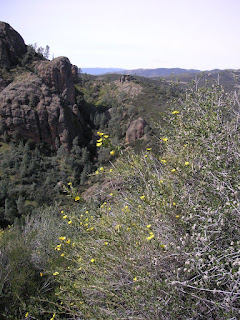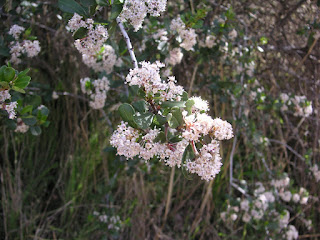



 Pinnacles National Monument - west entrance
Pinnacles National Monument - west entranceMarch 4, 2011
This is the earliest in the year we've ever visited Pinnacles, a truly unique geological oddity. Driving to the park was enjoyable with rolling hills of green... the green only existing a couple months out of the entire year around here. I've heard the "golden" of "golden California" has less to do with the discovery of gold in the late 1840's (or the blond locks of Hollywood babes), than with the prevalent golden color of dried grasses across much of the state. Within the park, it seemed like spring was just beginning. My usual favorites of CA poppies, clarkia, and Chinese houses were not out yet. There was definitely a different mix of Lepidoptera compared to what I usually see in April and May (2010 and 2009). And, as usual, we spotted numerous turkey vultures but no condors. Afterward, we did our traditional stop in tiny Soledad at La Fuente for yummy CA-Mex food, which was originally recommended by one of the rangers at Pinnacles a couple years ago. For other blog posts about Pinnacles, here's my virtual collection: kt's Nature ID companion.



























